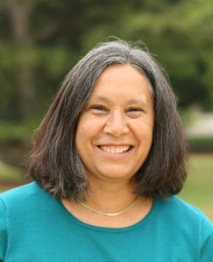 China Brotsky, founder of NCN and managing director of Tides Shared Spaces.
China Brotsky, founder of NCN and managing director of Tides Shared Spaces.
There are many ways that nonprofit organizations can collaborate to expand the impact of their missions. One that I’ve been writing a lot about is nonprofit centers, or shared space, such as the Children and Families Services Center (CFSC) in Charlotte, North Carolina—a 100,000-square-foot building that houses 9 nonprofit organizations. Peggy Egan, CFSC’s executive director, estimates that her members are saving a collective $1 million each year through co-location.
Recently, I interviewed China Brotsky, founder of The NonprofitCenters Network (NCN), a director at Tides, and a visionary leader in the national shared spaces movement. Some of the most amazing co-location projects in the country have been developed with the support and involvement of Tides and Nonprofit Centers Network (NCN), including the Thoreau Centers for Sustainability in New York and San Francisco.
Jean Butzen: Occupancy costs are usually the second highest expense in a nonprofit budget. Since 2007, they have fallen dramatically, but so has revenue available for rent. What has been the impact of the recession on the shared spaces movement in the nonprofit sector?
China Brotsky: We’re seeing a huge up-surge in interest. It’s the case of an idea reaching critical mass nationally right as people are looking for an idea like that. We are in a paradigm shift in the nonprofit sector. Organizations have to work smarter and with more impact to meet increased need in their communities, no matter what they do. We’ve seen some successful mergers, but mergers aren’t the only strategy to solve this problem in the nonprofit sector. By combining quality back-office services and shared space, organizations are finding they can do a better job of serving their clients and constituencies.
Are you enjoying this article? Read more like this, plus SSIR's full archive of content, when you subscribe.
Many co-location centers claim to save their members significant costs by sharing services, purchasing, and even some positions, but what proof is there?
NCN conducted a study in 2011 to measure the multiple impacts of nonprofit centers. The resulting report we issued, “Measuring Collaborations: Benefits and Impacts of Nonprofit Centers” quantified that 86 percent of tenant organizations said they felt they were more effective and efficient in a nonprofit center. There is real evidence that shared space, especially when combined with shared services (but even when not), helps nonprofits raise more money and increase staff morale, and allows organizations to serve more clients with better quality services. Beyond the organizations themselves, the study highlighted positive impacts on people, places, and society-at-large from nonprofit centers.
***
The study results are impressive, and are generating more interest among donors and nonprofit organizations that want to know how to do this. The NonprofitCenters Network is playing a leading role in the US and Canada in sharing best practices and helping nonprofit leaders learn from each other. In 2004, Tides launched NCN, a cross-sector national network of nonprofits and their real estate partners. NCN assists people who share space and services and helps them share knowledge, experience, and best practices with each other to prevent people from reinventing the wheel.
Meanwhile, the recession is forcing Tides to consider new ways to create nonprofit centers other than purchasing and developing projects, such as leasing space. China stressed the importance of groups thinking about the impact they want to have, then designing the model that fits their goals. Form follows function. For some organizations, it really may be more about sharing services, rather than sharing space. However, China warned that it might be harder to organize a shared services alliance than a shared space project. Most nonprofit centers start with sharing space, and then move onto the more difficult issue of sharing services. “There is something about being in a contiguous space that lowers the pain threshold around sharing services, and increases the trust,” she explained.
There are an amazing number of fantastic materials and resources available through the NCN website, including a list of almost 200 existing nonprofit centers and even a Google map that identifies, state-by-state, where the centers are located. Also, Tides and NCN staff are conducting co-location workshops around the country, so there may be a training opportunity coming to a city near you. I recently attended one in Chicago and found it to be extremely informative and very well done.
Support SSIR’s coverage of cross-sector solutions to global challenges.
Help us further the reach of innovative ideas. Donate today.
Read more stories by Jean Butzen.

